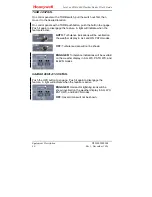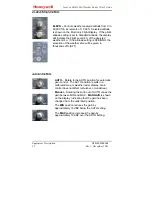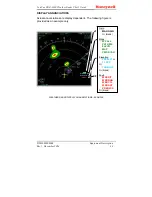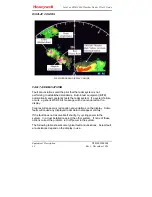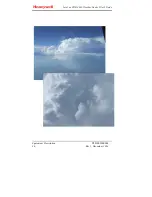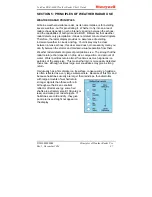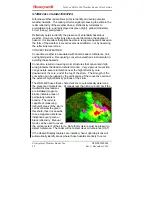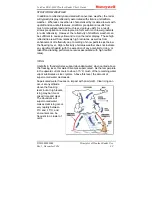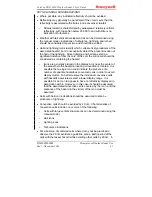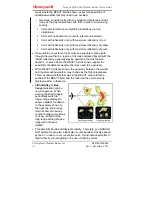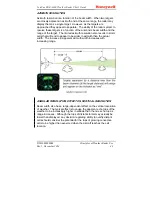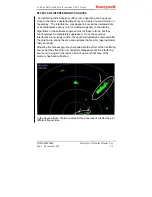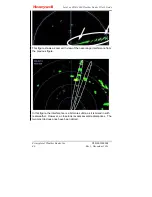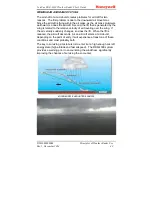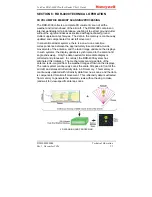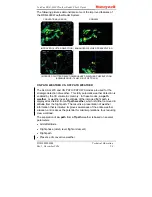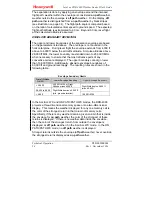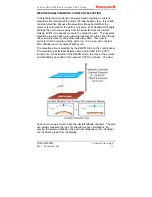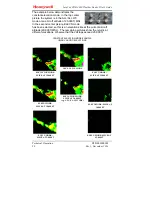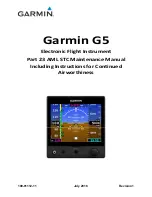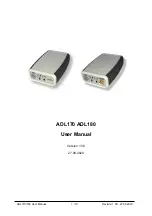
IntuVue RDR-4000 Weather Radar Pilot's Guide
D201002000008
Principles of Weather Radar Use
Rev 1, December 2014
41
PATH PLANNING CONSIDERATIONS
Where possible, any indicated reflectivity should be avoided.
Reflectivity may generally be penetrated if the crew is sure that the
reflectivity is associated with stratus (non-convective) rainfall.
o
Stratus rainfall is characterized by widespread, relatively uniform
reflectivity, with tops often below 25,000 ft, and with little or no
indication of turbulence.
Weather with tall vertical development (as can be determined using
the manual mode), indications of turbulence, lightning, and/or hail
should be considered convective and should be avoided.
Hail and lightning icons identify which cells are likely producers of the
associated hazard, but do not explicitly detect the present location of
the hail or the lightning. Since lightning and hail can extend a
significant distance from the core of the cell, the entire cell should be
considered as containing the hazard.
o
Icons are generally placed on the display at or near the center of
the area where the hazard-producing convection is located. It is
possible that a single icon could indicate the presence of a
number of separate hazardous convective cells in order to avoid
display clutter. To better resolve the individual convective cells
with hazards associated, select a lower display range. It is
possible for an icon to appear to have no reflectivity displayed in
association with it. However, in this case it should be assumed
that the associated convective cell is covered by the icon, and the
presence of the hazard in the vicinity of the icon must be
assumed.
Cells with hail icon indications should be assumed to also be
producers of lightning.
Convective cells should be avoided by 20 nm. Characteristics of
convective cells include one or more of the following:
o
Cells with large vertical structure (as can be determined using the
manual mode)
o
Hail
icons
o
Lighting
icons
o
Turbulence
indications.
For a build-up of scattered cells where it may not be practical to
observe the 20 nm avoidance guideline, plan a path upwind of the
cells with the lesser hazard while avoiding other cells by 20 nm. In




